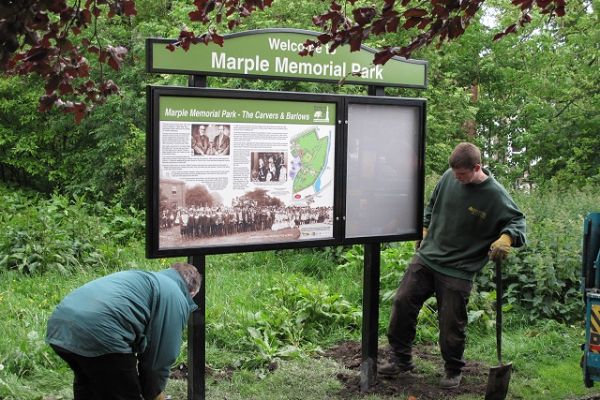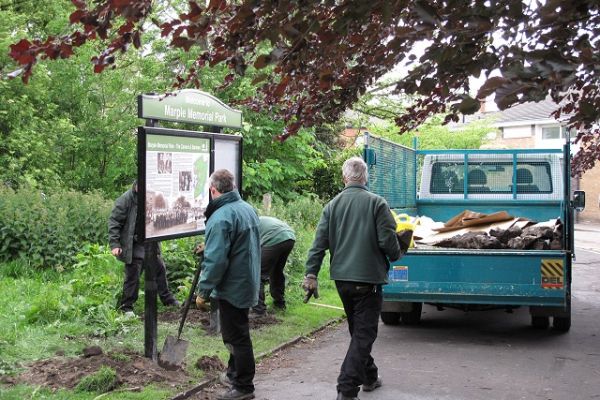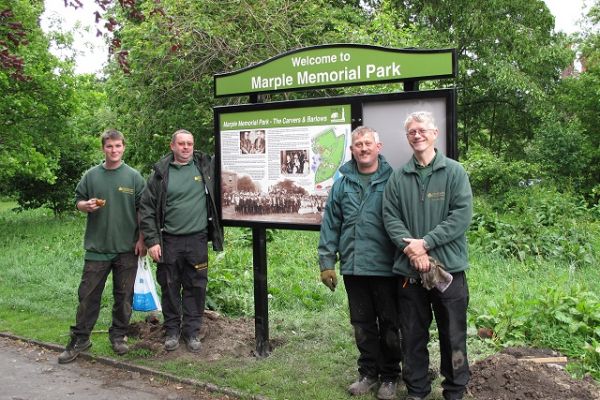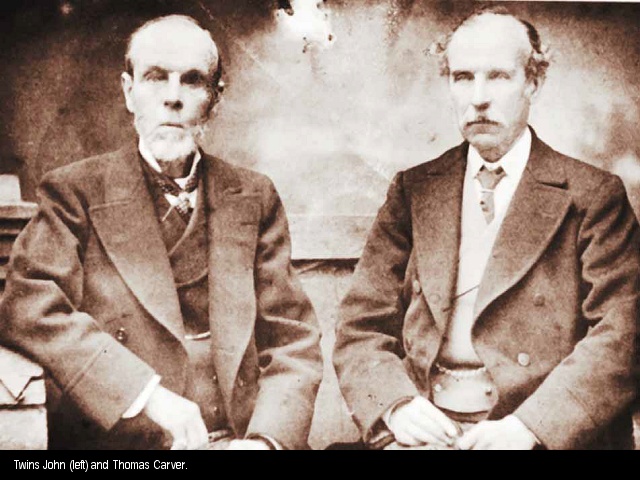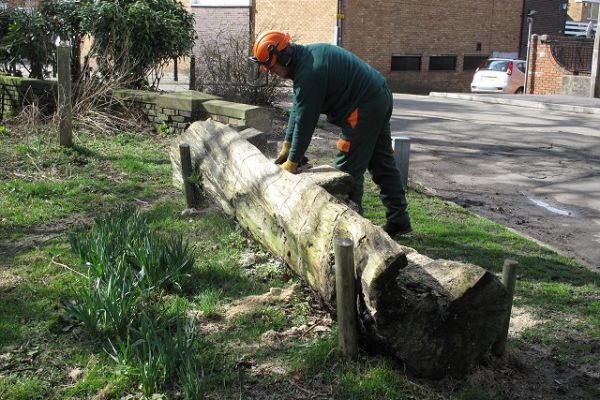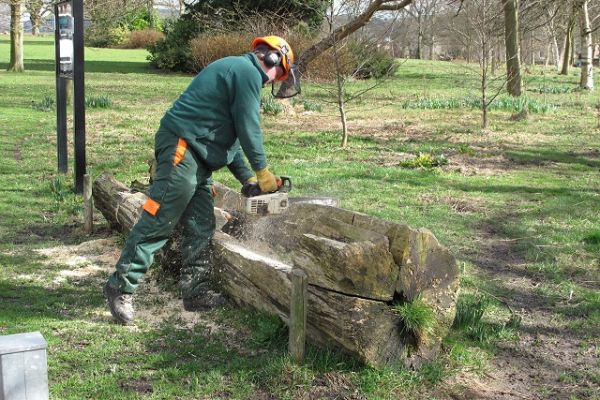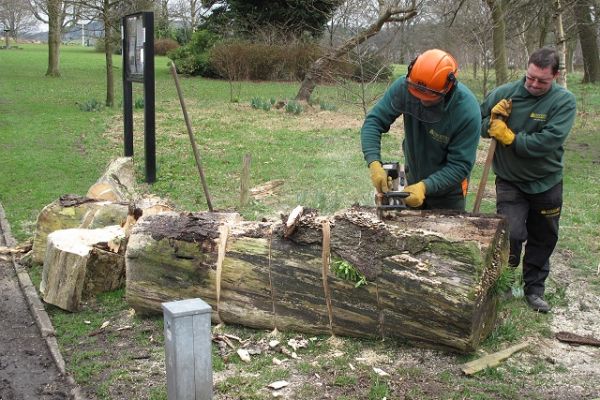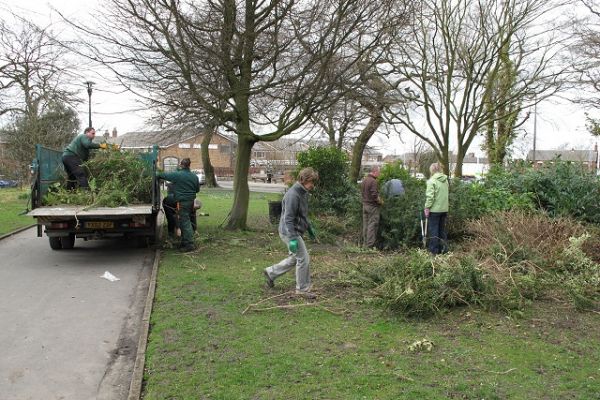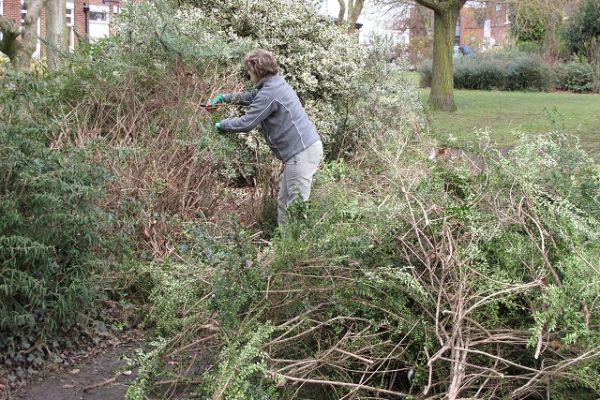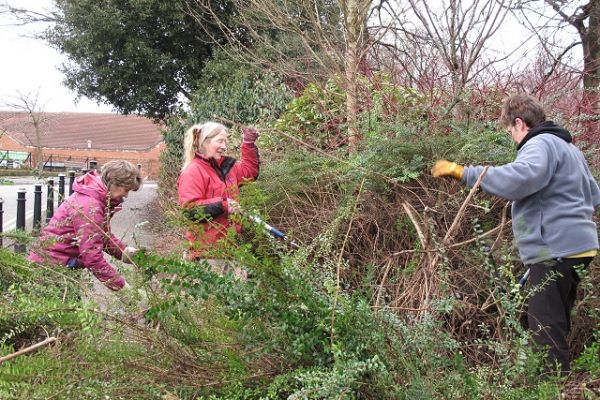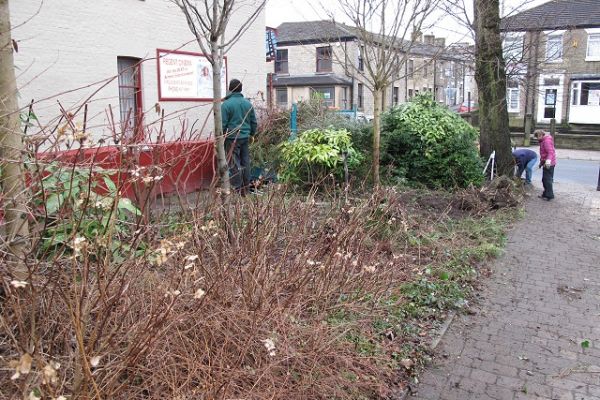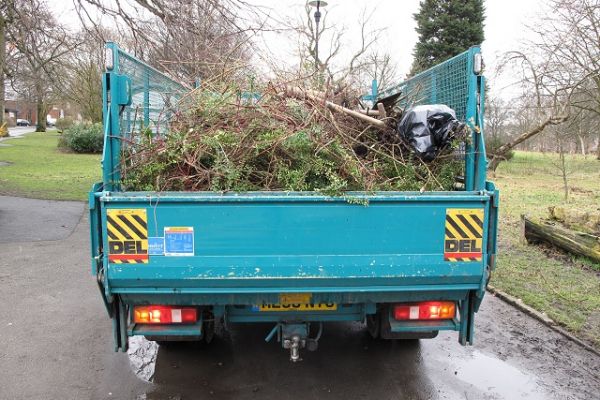A welcome to Marple Memorial Park
The main road entrance to the park from Stockport Road had significant infrastructure improvements carried out by the council in 2003/4 but by 2010, although the hard landscaping was generally still in good shape, some aspects of the entrance were starting to look a little bit tired, dilapidated and overgrown - especially the pedestrian entrance to the park itself.
Friends of Marple Memorial Park decided that it was time to do whatever we could to tidy things up and make the park entrance a bit smarter and more welcoming to visitors.
New Carver Display Panel - dedicated to Peter Bardsley 1929 - 2010
The Friends of Marple Memorial Park have been planning and working on improvements to the park entrance for many months. We've made a number of changes that may have gone largely unnoticed but have been gradually working towards this aim.
In May 2011, and after several months of design, development and consultation, we were pleased to complete a major step forward in this ongoing project to improve the park's entrance by installing a new "Welcome to Marple Memorial Park" display panel and notice board featuring the history of the Carver and Barlow families.
The display is dedicated to local historian and Friend of Marple Memorial Park Peter Bardsley, who sadly passed away in 2010.
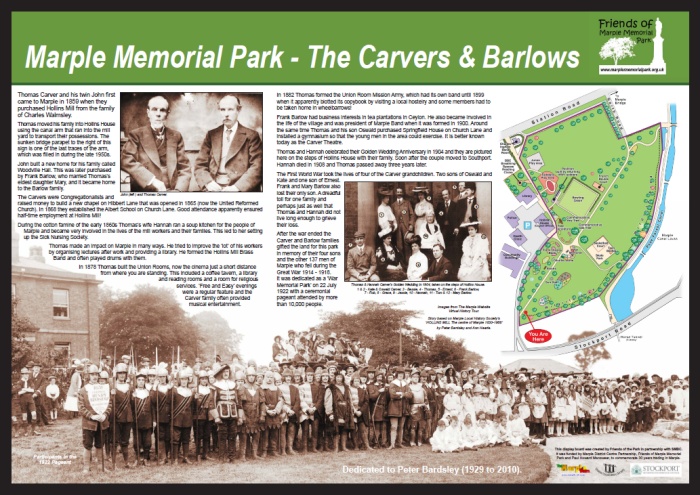
The story featured on the panel of the Carver and Barlow families who gifted the park to the community in 1922 is based on the Marple Local History Society booklet "HOLLINS MILL The centre of Marple 1830-1956", which was written by Peter himself with fellow local historian Ann Hearle. This booklet is recommended if you are interested in learning more about Marple's benefactors and is available in the Heritage section of Marple Library or from the History Society themselves. The fantastic photograph of the park's dedication and the others used on the panel were provided by The Marple Website's Virtual History Tour of Marple.
The display cost £2,240 and was funded by a £1,000 donation from the Marple District Centre Partnership and a £500 donation from Paul Howard Menswear shop on Market Street to commemorate 30 years of trading in Marple. The balance of £740 was raised by Friends of the Park, including our fund raising tombola supported by the donation of prizes from the local business community. For more details of the businesses who regularly help us see our Local Sponsors' page.
The display was installed free of charge by the Parks and Recreation Area Team, seen in the photographs below.
For visitors to the web site not able to see the panel, here's the history text:
Thomas Carver and his twin John first came to Marple in 1859 when they purchased Hollins Mill from the family of Charles Walmsley. Thomas moved his family into Hollins House using the canal arm that ran into the mill yard to transport their possessions. The sunken bridge parapet to the right of this sign is one of the last traces of the arm, which was filled in during the late 1950s.
John built a new home for his family called Woodville Hall. This was later purchased by Frank Barlow, who married Thomas’s eldest daughter Mary, and it became home to the Barlow family.
The Carvers were Congregationalists and raised money to build a new chapel on Hibbert Lane that was opened in 1865 (now the United Reformed Church). In 1868 they established the Albert School on Church Lane. Good attendance apparently ensured half-time employment at Hollins Mill!
During the cotton famine of the early 1860s Thomas’s wife Hannah ran a soup kitchen for the people of Marple and became very involved in the lives of the mill workers and their families. This led to her setting up the Sick Nursing Society. Thomas made an impact on Marple in many ways. He tried to improve the ‘lot’ of his workers by organising lectures after work and providing a library. He formed the Hollins Mill Brass Band and often played drums with them.
In 1878 Thomas built the Union Rooms, now the cinema just a short distance from where you are standing. This included a coffee tavern, a library and reading rooms and a room for religious services. ‘Free and Easy’ evenings were a regular feature and the Carver family often provided musical entertainment.
In 1882 Thomas formed the Union Room Mission Army, which had its own band until 1899 when it apparently blotted its copybook by visiting a local hostelry and some members had to be taken home in wheelbarrows!Frank Barlow had business interests in tea plantations in Ceylon. He also became involved in the life of the village and was president of Marple Band when it was formed in 1900. Around the same time Thomas and his son Oswald purchased Springfield House on Church Lane and installed a gymnasium so that the young men in the area could exercise. It is better known today as the Carver Theatre.
Thomas and Hannah celebrated their Golden Wedding Anniversary in 1904 and they are pictured here on the steps of Hollins House with their family. Soon after the couple moved to Southport. Hannah died in 1908 and Thomas passed away three years later.
The First World War took the lives of four of the Carver grandchildren. Two sons of Oswald and Kate and one son of Ernest. Frank and Mary Barlow also lost their only son. A dreadful toll for one family and perhaps just as well that Thomas and Hannah did not live long enough to grieve their loss.
After the war ended the Carver and Barlow families gifted the land for this park in memory of their four sons and the other 137 men of Marple who fell during the Great War 1914 - 1918. It was dedicated as a ‘War Memorial Park’ on 22 July 1922 with a ceremonial pageant attended by more than 10,000 people.
Log Bench Removal
Prior to installing the new display board we removed the old log bench that had seen better days and was now going rotten and holding water on the sitting area. It was cut up with a chain saw and the sections moved to the Breathing Places area behind the library as the rotting wood is a ideal insect habitat, which in turn helps to feed the wild birds. We also gave the shrub beds near to the entrance a good prune back and tidy up.
Cinema Bed Cut-back and Replanted
The first task we undertook relating to this project was to cut back the shrubbery in the large bed alongside the cinema as it had become severely overgrown since it was replanted by the council in 2003. Following this the council planted some new specimens and the bed now looks much more attractive than before.



